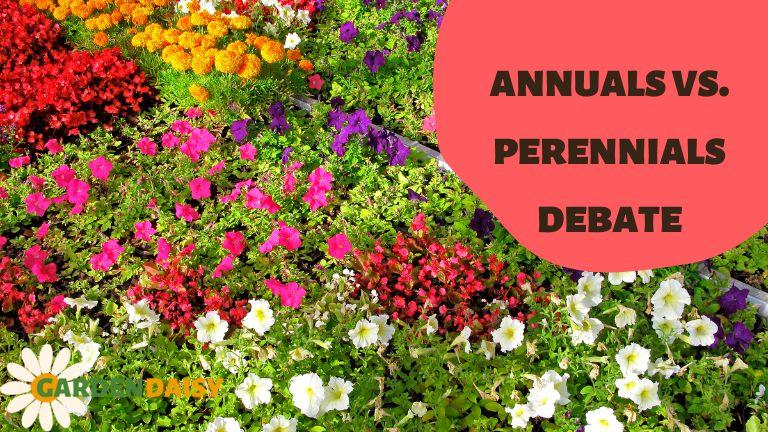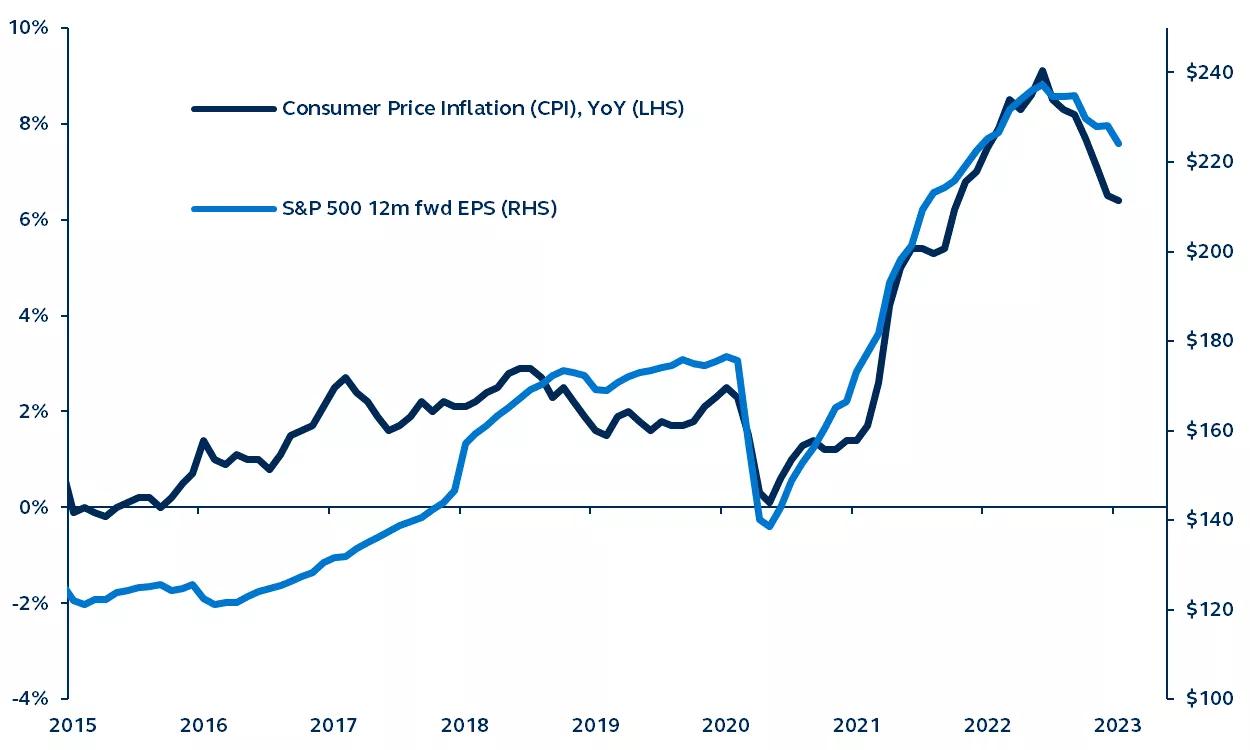Annuals Or Perennials: Factors To Consider When Choosing Flowers

Table of Contents
Understanding the Difference: Annuals vs. Perennials
What are Annual Flowers?
Annual flowers complete their entire life cycle – from seed to flower to seed again – within a single growing season. This means they germinate, grow, bloom, produce seeds, and then die all in one year.
- Examples of popular annuals: Zinnias, petunias, marigolds, cosmos, impatiens, sunflowers, and nasturtiums. These offer a huge variety in color, size, and shape.
- Pros of annuals:
- Wide Variety: Annuals offer an incredibly diverse range of colors, shapes, and sizes, allowing for creative and dynamic garden designs.
- Fast-Growing: Many annuals grow quickly, providing instant color and impact to your garden.
- Vibrant Displays: They often produce abundant blooms throughout the growing season.
- Cons of annuals:
- Short Lifespan: Their short lifespan requires replanting every year, increasing your overall gardening workload and cost.
- Replanting Necessary: You'll need to purchase new seeds or seedlings each spring to maintain the vibrant display.
What are Perennial Flowers?
Perennial flowers, in contrast, live for more than two years, returning year after year. While they may die back to the ground in winter in colder climates, their roots survive, allowing them to regrow and bloom again in the spring.
- Examples of popular perennials: Daylilies, coneflowers (Echinacea), hostas, lavender, salvia, and peonies.
- Pros of perennials:
- Long-lasting Beauty: Enjoy their blooms for many years to come, with minimal effort once established.
- Less Maintenance (Eventually): After the initial establishment period, perennials often require less maintenance than annuals.
- Cost-Effective Long-Term: Although the initial investment might be higher, you avoid the annual expense of replacing annuals.
- Cons of perennials:
- Slower Establishment: Perennials take longer to establish themselves and reach their full blooming potential.
- More Initial Care: They may need more attention during their first year or two.
- Winter Die-Back: In many climates, the above-ground parts of perennials die back in winter, leaving behind only the roots.
Factors to Consider When Choosing
Climate and Hardiness Zones
Choosing plants that thrive in your specific climate is critical. Hardiness zones indicate the average minimum winter temperatures in a given area. Using a hardiness zone map (easily found online) is essential for selecting annuals and perennials that can survive your local winters. Consider frost dates, as well – knowing when the last frost typically occurs in spring and the first frost in autumn helps determine planting and protecting times.
Sunlight Requirements
Different plants have different sunlight needs. Some thrive in full sun (6+ hours of direct sunlight daily), while others prefer partial shade (3-6 hours) or full shade (less than 3 hours). Insufficient sunlight can lead to weak growth and fewer blooms, while too much sun can scorch leaves. Observe your garden throughout the day to determine how much sunlight each area receives before selecting your plants.
Soil Conditions
Well-drained soil is crucial for most flowering plants. Poorly drained soil can lead to root rot and other problems. Test your soil's pH and nutrient levels to ensure it meets the needs of your chosen plants. Amend your soil with compost, peat moss, or other organic matter to improve drainage and fertility.
Maintenance and Time Commitment
Annuals generally require more frequent watering, fertilizing, and deadheading (removing spent blooms) than perennials. Perennials, once established, often require less maintenance. Consider your available time and gardening experience when selecting plants. Choose low-maintenance options if you have a busy schedule.
Budget and Cost
Annuals typically have a lower initial cost per plant compared to perennials. However, the recurring annual expense of replacing them adds up over time. Perennials represent a larger upfront investment, but the long-term cost savings can be significant. Consider the overall cost, including seeds, seedlings, or established plants, when planning your budget.
Choosing the Right Flowers for Your Garden Style
Creating a Cottage Garden
Cottage gardens are known for their relaxed, informal look. Mix annuals like cosmos and zinnias with perennials like coneflowers and daylilies for a carefree, abundant feel.
Designing a Formal Garden
Formal gardens emphasize structure and symmetry. Select plants with consistent heights and forms, such as boxwood hedges combined with precisely arranged annuals and perennials in matching colors and patterns.
Planting for Pollinators
Attract beneficial insects like bees, butterflies, and hummingbirds by choosing annuals and perennials known for their nectar-rich blooms. Consider planting lavender, bee balm, and sunflowers for a pollinator-friendly garden.
Conclusion
Choosing between annuals and perennials for your garden depends on several factors, including your climate, available sunlight, soil conditions, maintenance preferences, and budget. Annuals offer instant color and variety, while perennials provide long-term beauty and cost savings. By carefully considering these factors, you can select the perfect blend of annuals and perennials to create a thriving and beautiful garden. Start planning your garden today – explore the amazing world of annuals and perennials!

Featured Posts
-
 Stedelijke Verantwoordelijkheid Na Oorlog De Oproep Van Oxfam Novib
May 29, 2025
Stedelijke Verantwoordelijkheid Na Oorlog De Oproep Van Oxfam Novib
May 29, 2025 -
 Should You Plant Annuals Or Perennials A Practical Comparison
May 29, 2025
Should You Plant Annuals Or Perennials A Practical Comparison
May 29, 2025 -
 Diddy Trial Recap Ex Employees Testimony On Combs Alleged Threat To Kid Cudi
May 29, 2025
Diddy Trial Recap Ex Employees Testimony On Combs Alleged Threat To Kid Cudi
May 29, 2025 -
 Rising Long Term Yields Ueda Highlights Potential Risks And Ripple Effects
May 29, 2025
Rising Long Term Yields Ueda Highlights Potential Risks And Ripple Effects
May 29, 2025 -
 Nyhetsvarsel Oslo Stor Brann Involverer Fire Bater
May 29, 2025
Nyhetsvarsel Oslo Stor Brann Involverer Fire Bater
May 29, 2025
Latest Posts
-
 Attend The Virtual Investor Conference May 15 2025 International Company Presentations
May 30, 2025
Attend The Virtual Investor Conference May 15 2025 International Company Presentations
May 30, 2025 -
 Corporate Earnings Strong Now But Will The Trend Continue
May 30, 2025
Corporate Earnings Strong Now But Will The Trend Continue
May 30, 2025 -
 Live Webcast Deutsche Bank Depositary Receipts Virtual Investor Conference May 15 2025
May 30, 2025
Live Webcast Deutsche Bank Depositary Receipts Virtual Investor Conference May 15 2025
May 30, 2025 -
 Deutsche Bank Executives Meet With Finance Minister To Discuss Economic Issues
May 30, 2025
Deutsche Bank Executives Meet With Finance Minister To Discuss Economic Issues
May 30, 2025 -
 Virtual Investor Conference Key International Companies Participating May 15 2025
May 30, 2025
Virtual Investor Conference Key International Companies Participating May 15 2025
May 30, 2025
